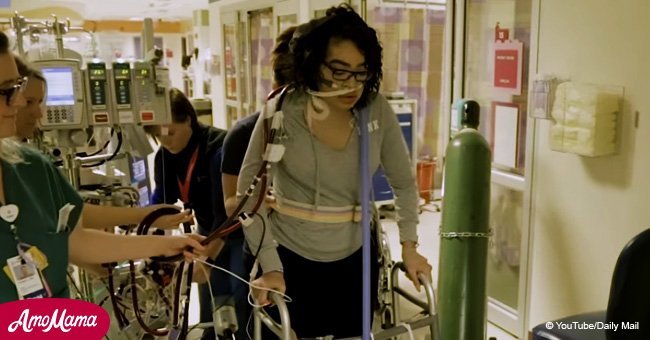
No one can explain how this girl on life support is able to walk and eat
This young girl was perfectly healthy one minute, but has now spent months lying in hospital for reasons doctors still cannot fathom.
16-year-old Zei Uwadia was looking forward to graduating high school early and going on to study to become a dermatologist. But then something horrible and unexpected derailed her entire life.
In October 2017, she texted her mother to please urgently have her collected from school, as she was feeling "dizzy and sick," reported Liftable. In the days that followed, her condition worsened, with no explanation as to why.
She was having difficulty breathing, and her mother took her to the ER, where it was determined that she had no signs of a bacterial infection whatsoever.
Still feeling awful, Uwadia transferred to Children’s Mercy Hospital in Kansas City for a second opinion. There it was discovered that her oxygen levels were dangerously low, and she was immediately admitted and placed on ECMO, the highest form of life support.
The machine helped to keep her alive while doctors scratched their heads trying to understand the cause of her illness.
“What we know is that all of her lung tissue on both sides is affected. What we don’t know is what caused it,” her doctor said.
So far, they have explored the possibilities of both infectious diseases — rheumatological, immunological, primary pulmonary diseases, and are unable to come up with an answer. They are communicating with other research centers hoping someone can find the cause.
While ECMO is keeping Uwadia alive, it also has dangerous side effects. Essentially, it is a blood thinner, helping to prevent her blood from clotting. But if she starts to bleed, it could mean that she can quickly bleed to death.
“She’s cried red blood tears, and she’s had bloody noses, and we’ve gone through those things, but we’ve made it,” her mother, Brie Kerschen, said.
The longest most patients can survive on ECMO is 21 days, but Uwadia has shocked doctors with the longest ECMO run on hospital records.
By December, she was starting to feel better, and wanted some form of mobility and independence. She asked her doctor if she would be allowed to walk, and he told her that if she could stand unassisted for five minutes and — outlast him — then he'd allow it.
Soon after, she became the first patient in the hospital's history on ECMO to sit up, stand, and even walk.
She has since started exercising with small weights, eating tacos, and getting her nails done from time to time.
“When she first took her first steps in the hallway, I’m pretty sure I cried, and then you could probably also hear my laughter,” her mom said.
Kerschen is convinced that the fact that her daughter was able to walk is the reason that she is still alive and clinging to hope.